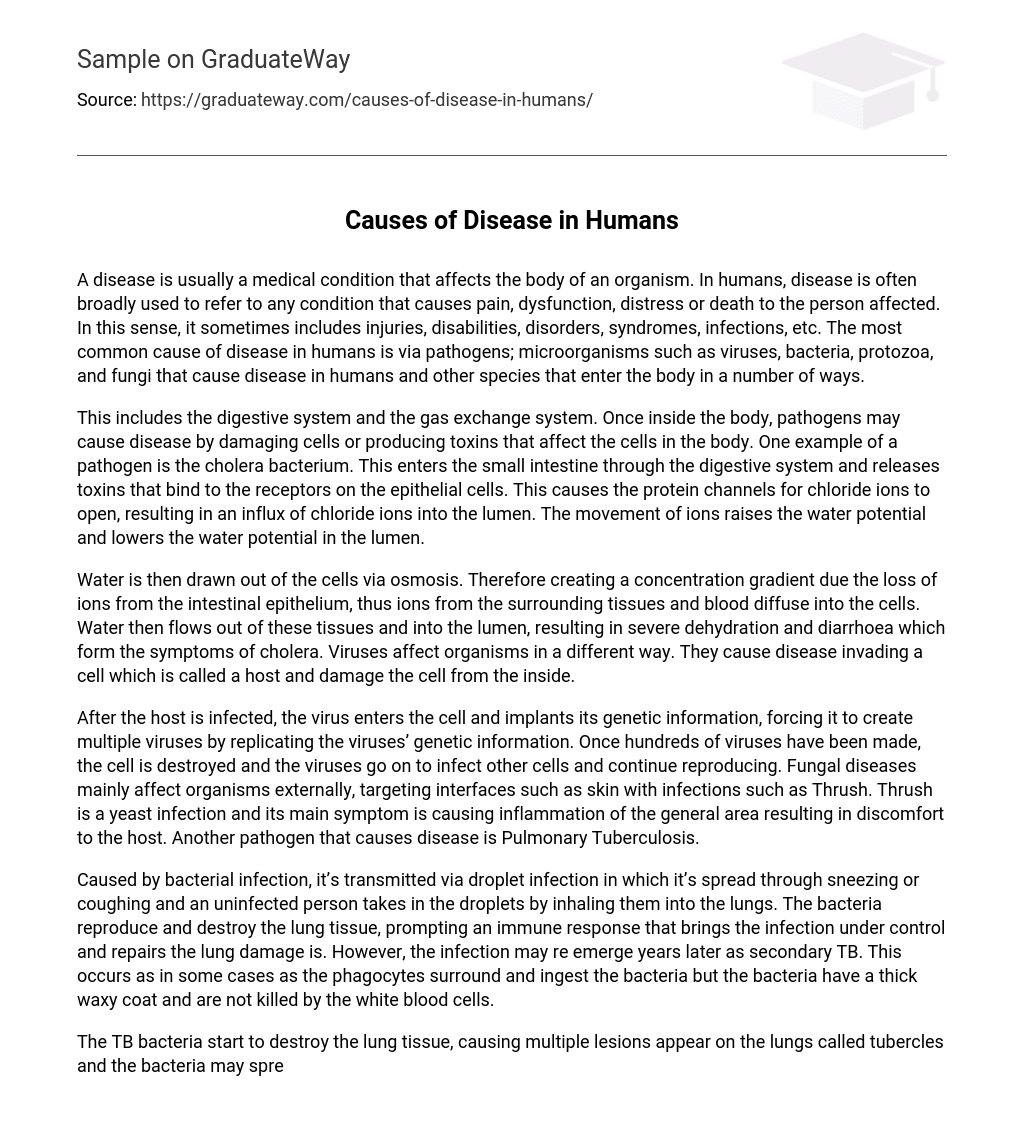A disease is a medical condition that affects the body of an organism, encompassing injuries, disabilities, disorders, syndromes, and infections. In humans, the term “disease” refers to any condition causing pain, dysfunction, distress or death. Pathogens like viruses, bacteria, protozoa and fungi are the primary cause of diseases in humans and can enter through various means.
Both the digestive system and the gas exchange system can be affected by pathogens, which can cause illness by damaging cells or producing harmful substances that affect cells. An example of a specific pathogen is the cholera bacterium, which enters the small intestine through the digestive system. Once it infiltrates this pathway, it releases toxins that attach to receptors on epithelial cells. This attachment then activates protein channels that help transport chloride ions, resulting in an increase in chloride ions within the lumen. As a result, water potential within the lumen increases while simultaneously decreasing.
The symptoms of cholera, including severe dehydration and diarrhea, are caused by the loss of ions from the intestinal epithelium through osmosis. This creates a concentration gradient and draws water out of cells. Consequently, ions from surrounding tissues and blood diffuse into the cells, causing water to flow out of these tissues and into the lumen.
Viruses have varying impacts on organisms as they invade host cells and cause internal damage.
After infecting the host, the virus enters the cell and implants its genetic information, compelling the cell to generate multiple viruses through replicating the virus’s genetic information. Eventually, hundreds of viruses are produced, causing the infected cell’s destruction and the release of these viruses to infect other cells and perpetuate reproduction.
Fungal diseases, such as Thrush, primarily affect external organisms by infecting interfaces like the skin. This yeast infection results in inflammation in the affected area and causes discomfort for the host. Another disease-causing pathogen is Pulmonary Tuberculosis.
Tuberculosis (TB) is a bacterial infection that spreads through droplet infection, such as sneezing or coughing. When an uninfected person inhales these droplets into their lungs, the bacteria multiply and harm lung tissue. This triggers an immune response to combat the infection and repair the damage. However, in certain instances, secondary TB may recur years later. At this stage, phagocytes surround and ingest the bacteria but cannot eliminate them due to their thick waxy coat.
TB bacteria destroy lung tissue, causing the formation of multiple lesions called tubercles in the lungs. The bacteria can also spread to the brain and other organs besides both lungs. Symptoms include coughing up damaged lung tissue and blood, along with severe breathlessness. Genetic code defects resulting from mutations impacting nucleotide base sequence can also lead to disease in humans.
A mutation causes a change in the DNA base sequence, leading to different amino acids being coded for. This leads to a change in the polypeptide and ultimately modifies the protein’s tertiary structure. Consequently, the protein may lose its ability to perform its function. This occurs because the enzyme’s active site undergoes a shape change, rendering it incompatible with its substrate. As a result, an non-functional protein is produced, preventing the formation of enzyme-substrate complexes.
Cancer occurs due to genetic mutations in humans, leading to uncontrolled cell division and the destruction of surrounding healthy tissue. Proto-oncogenes are specifically involved in this process by stimulating cell division through growth factors that attach to receptor proteins on cell membranes and activate genes necessary for DNA replication.
Proto-oncogenes can mutate and transform into oncogenes, causing cells to divide rapidly. Simultaneously, mutations can render tumour suppressor genes inactive, which normally slow down cell division. When a tumour suppressor gene is both mutated and inactive, it cannot regulate cell division anymore. The presence of an oncogene along with mutated tumour suppressor genes leads to unregulated cell division, eventually leading to the development of cancerous tumors.





